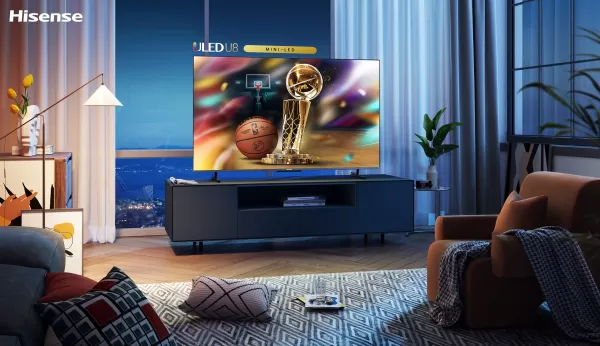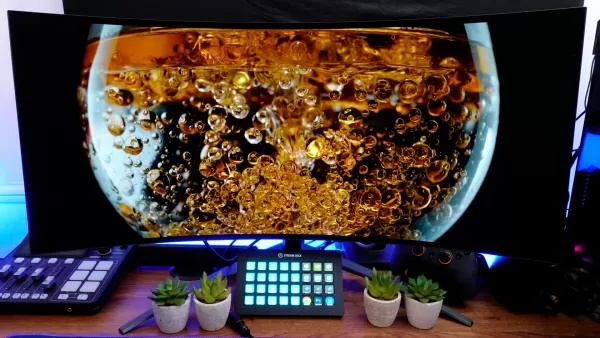When I purchased my first OLED TV, the LG E8 55-inch model back in 2019, right before the global lockdown, it turned out to be the perfect companion for isolation. Initially, I wasn't fully aware of the wonders of OLED (organic light-emitting diode) technology. I knew that, unlike LCD displays with backlights, OLED uses self-lit pixels for infinite contrast. But it was through immersive gaming experiences in titles like Final Fantasy XV and The Last of Us Part II that I truly appreciated the nostalgic, dream-like quality these screens offer. My journey didn't end with the E8; a few years later, I upgraded to the LG C2 65-inch TV. Since then, I've explored numerous devices with OLED displays and discovered that not all OLED screens are created equal, nor do they share the same technology. You might wonder about the types of OLEDs available. While there are many, the three you should focus on are WOLED, QD-OLED, and AMOLED.
 WOLED, QD-OLED, and AMOLED: How They Work
WOLED, QD-OLED, and AMOLED: How They Work
OLED technology has been around for decades, with companies like Kodak and Mitsubishi experimenting with it. However, it was LG's introduction of OLED TVs in the early 2010s that brought the technology into the mainstream.
LG's version of OLED is known as WOLED (White OLED). Although LG markets it simply as OLED, WOLED uses a pure white OLED layer with an RGBW color filter. This approach addresses the issue of burn-in, which is a concern with OLED displays due to the differing degradation rates of red, green, and blue emitters. However, WOLED's use of color filters can lead to imbalanced brightness and reduced color volume. High-end WOLED models attempt to mitigate this with Micro Lens Array technology, which enhances light focus.
In 2022, Samsung introduced QD-OLED (Quantum Dot OLED), which replaces the white OLED layer with a blue one that interacts with quantum dot color convertors. This method absorbs and converts light more efficiently, preserving brightness and enhancing color vibrancy.
AMOLED, on the other hand, falls into a unique category. It's similar to WOLED but includes a thin-film transistor (TFT) layer for faster pixel activation. This comes at the cost of OLED's renowned infinite contrast.
 WOLED, QD-OLED, and AMOLED: Which Is Better for Gaming?
WOLED, QD-OLED, and AMOLED: Which Is Better for Gaming?
Choosing the right OLED technology for gaming depends on your specific needs and preferences. Generally, QD-OLED is considered the best for gaming. However, WOLED and AMOLED have their own advantages in certain scenarios.
AMOLED displays are commonly found in smartphones and laptops due to their flexibility and high refresh rates. They're less common in TVs due to cost, and they struggle with visibility in direct sunlight due to lower peak brightness.
For gaming monitors and TVs, you have the choice between WOLED (marketed as OLED) and QD-OLED. WOLED can achieve high brightness, particularly with whites, but its RGBW filter can diminish color brightness. QD-OLED, with its quantum dot technology, offers superior overall brightness and color vibrancy.
In environments with high glare, WOLED displays maintain deep blacks better than QD-OLED. This is because QD-OLED lacks a polarizing layer, which can cause a purplish tint in bright conditions. However, the choice between WOLED and QD-OLED often comes down to the specific model's specs and price point.
The Future of OLED Is PHOLED
While there are various types of OLED, PHOLED (Phosphorescent OLED) stands out. It uses phosphorescent materials to convert energy to light, offering higher luminous efficiency than traditional fluorescent OLEDs. The challenge with PHOLED has been the shorter lifespan of its blue component, but LG has recently announced a breakthrough, dubbing it "Dream OLED." This technology promises brighter displays with lower power consumption.
Although PHOLED TVs won't be available soon, we can expect to see this technology in smartphones and tablets in the near future.


![Meme Fruits Powers Ranked: Top Abilities Guide [Update 1]](https://imgs.39man.com/uploads/53/174166202967cfa74dbc326.png)




![NULL [Remastered]](https://imgs.39man.com/uploads/71/1719651062667fcaf6c483b.png)








